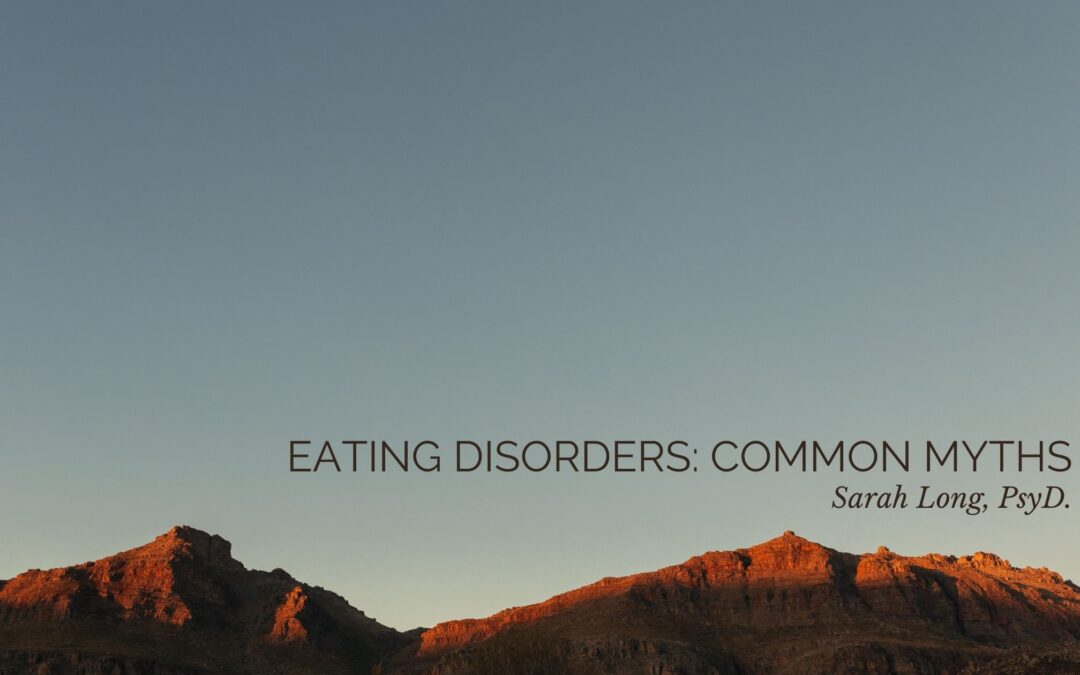Nearly 50% of the population in the United States either knows someone who struggles with an eating disorder, or is a sufferer. Despite eating disorders being widespread, complex, and life-threatening, there is a ton of misinformation out there. These misconceptions can lead to shame, lack of recognition by helping professionals, school personnel, and even loved ones, not to mention hesitation to seek treatment.
In the spirit of building awareness about this difficult issue, below are a few common myths and facts that counter them. Awareness and early intervention are the most powerful weapons against this destructive disease.

Reality: Eating disorders are not simply a ‘phase,’ and serious implications for one’s health. All eating disorders can have severe medical complications, such as cardiac complications, poor bone health, infertility, and gastrointestinal distress. Eating disorders can also be fatal, in fact Anorexia nervosa has the highest mortality rates of any mental illness. Many professionals believe the current statistics are an underestimate because many deaths are not recorded as being caused by an eating disorder. Instead the cause of death is listed as a consequence of eating disorder behaviors, such as cardiac arrest.
Myth: Only white, teenage girls who are from upper class families have an eating disorder.
Reality: Eating disorders do not discriminate. They affect people of all ages, gender identities, ethnicities, and sexual orientations. Eating disorders are seen across all socioeconomic groups.
Myth: You can tell if a person is struggling with an eating disorder by their appearance.
Reality: You can’t. Contrary to the way eating disorders are portrayed in the media, most eating disorders do not involve emaciation, which is often associated with anorexia. Those who struggle with bulimia, binge eating disorder, atypical anorexia, and subclinical eating disorders, often fall within a weight range that medical professionals consider to be ‘normal weight’ or ‘overweight.’ Simply put, one cannot determine a person’s health by their weight, and one cannot tell whether a person has an eating disorder by simply looking at them.

Reality: They are not. Eating disorders are complex psychiatric and medical illnesses that are influenced by biological, psychological, and socio-cultural factors. Pursuing recovery is a choice, but is not straightforward. Recovery is not a simple choice to stop engaging in eating disorder behaviors. Lasting recovery takes time, and requires support and the appropriate treatment.
Myth: “I don’t have a ‘real’ eating disorder, so I don’t think I need, or deserve, help.”
Reality: Over the years, countless clients have shared their belief that they are not ‘sick enough’ and are hesitant to seek any type of therapy or nutrition support. They mistakenly believe that they ‘should be able to just get over it’ by themselves. Any type of eating disorder behavior or belief can lead to suffering and strained relationships. Research has shown that subclinical eating disorders are just as devastating, and can cause serious medical complications, significant psychological distress, and negatively affect relationships. Regardless of the type of eating disorder, or severity, treatment is warranted.
Myth: Most people never recover from an eating disorder.

For more statistics and information on myths, the National Eating Disorder Association and The Eating Disorder Coalition are great resources:
https://www.nationaleatingdisorders.org
http://www.eatingdisorderscoalition.org/
Photo Credits:
Photo by Margaret Jaszowska on Unsplash
Photo by Jennifer Burk on Unsplash
Photo by Priscilla Du Preez on Unsplash

